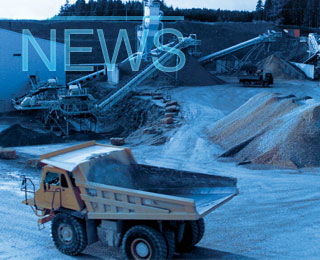Last week, Lafarge announced the disposal of two cement works and a network of ready-mix concrete plants in Missouri and Oklahoma, USA, to Eagle Materials Inc, adding US$446m (EUR344m) to its coffers. With the deal, Eagle Materials acquires the 1Mta Kansas City (MO) and the 0.6Mta unit in Tulsa (OK) as well as related distribution terminals, two aggregate quarries, eight ready-mixed concrete businesses and a fly ash firm.
The move is seen by some as a win-win for both parties. Eagle secures a foothold in the central and mountain regions, while Lafarge manages to offload two outlying works at a fair price (approximately US$250/t for the cement assets), allowing the French multinational to make significant progress towards achieving its EUR1bn divestment programme. Together with EUR72m of divestments in the first half of 2012, Lafarge is close to halfway of reaching its annual target.
Critics, however, will argue that this move again illustrates the inability of this debt-laden European major to hold on to its international portfolio, and that Lafarge has been forced to sell its assets to pay down debt, selling at the trough and therefore missing out on the opportunity to benefit from the future market recovery. This deal also marks Lafarge's second phase of withdrawal from the US market, following the sale of 3.2Mta capacity in the southeast United States to Colombia's Argos in 2011. Ultimately, it is about priorities, and with the completion of the Tarmac joint venture in the UK set for completion in November, Lafarge will have gone some way to restoring financial flexibility.
US market recovery continues
The recent news out of the US shows a welcome upturn in the cement market as construction and supply chain restocking combine to push demand up by an expected six per cent to 76Mt by the end of the year.
While the housing sector triggered the recession in the US, it appears that it is now leading the country out of recession. While the normal volume of new housing hovers around the 1.5m mark, housing starts last year reached 612,000 units. For 2012, research house Morgan Stanley forecasts a 19 per cent rise to 730,000t. Meanwhile, non-residential construction should slow into 2013 with the highways and streets segment continuing to contract.
The US Geological Survey (USGS) published its preliminary July 2012 estimates of cement shipments, showing a 7.6 per cent MoM increase. While the higher figure was an improvement on the 4.7 per cent upward trend noted the previous month, it was the second successive single-digit increase after six successive months of double-digit growth.
Meanwhile, for the first seven months of 2012, the USGS noted a 14.1 per cent rise YoY. Leading the pack, southern Texas deliveries increased by a quarter while Michigan, New York and northern Texas all registered advances in the region of 18 per cent.
While the trend remains positive in 2013, Morgan Stanley expects growth in cement demand to slow and to follow the construction trend. However, growth is forecast to accelerate from 2014 as the important highways and street segment picks up.
"By 2015-16, the US should exhibit emerging market type growth rates," argued Yuri Serov, Morgan Stanley, speaking at the recent Cemtech Europe conference in Geneva. Serov predicts national consumption will ultimately hit the 90Mta mark as market expansion exceeds nine per cent in coming years. In the key housing sector, he forecasts a healthy 14 per cent annual growth in housing starts in 2013-14, followed by a 17 per cent increase to 1.11m units in 2015. However, a full recovery is not expected until 2018 when he estimates housing starts at 1.47m.
